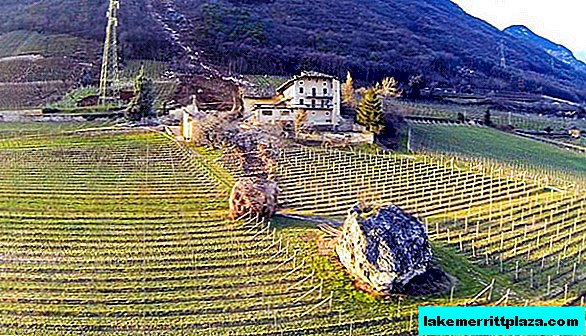Today, boiled sausage will not surprise anyone. She has long moved from the category of delicacies to the orderly ranks of everyday products. But, if the domestic consumer industrial sausages are increasingly associated with toilet paper, then Italians talk about their Mortadella with a proudly raised head. Born in Bologna, she has become a symbol of this city and an example of the quality of meat products. Mortadella Bologna is the honored owner of the IGP category.
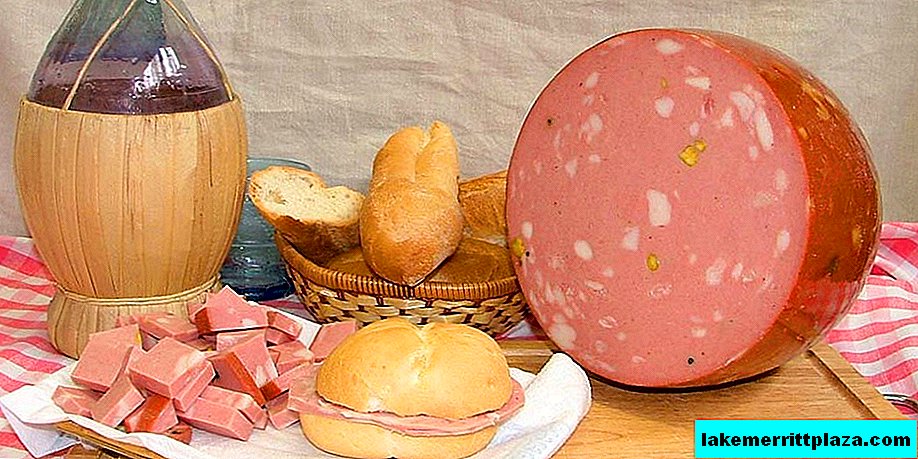
Story
Probably mortadella was first born in the 1st century on the territory between the regions of Emilia-Romagna and Lazio. But over time, this meat product went into oblivion and was re-born only in the 16th century in the city of Bologna.
In the Archaeological Museum of Bologna, the first evidence of the production of sausage, which dates back to the period of the Roman Empire, is preserved: this is an image of grazing pigs and a mortar with a pestle, with the help of which meat was originally ground for sausage.
The origin of the term mortadella is not fully defined. Some historians associate it with the Latin myrtatum, which means myrtle (a spice used to prepare meat products before our era). According to another hypothesis, the name of sausage originates from the ancient device for grinding meat - mortar. The third version relies on the consistency of the product and claims the connection of mortadella with the word murtarum (finely chopped meat).
In the Middle Ages, mortadella was a very expensive product due to the use of a large number of spices, which were not cheap at the time, which helped to preserve it longer.

The price of sausage was nine times higher than the price of bread, 3 times higher than ham, 2 times higher than olive oil. Interestingly, mortadella was even one of the gifts at the wedding of Lucrezia Borgia and Alfonso I.
In 1661, Cardinal Farnese adopted a law to protect mortadella from fakes. But only in the 1800s with the advent of mechanized production did the meat product become available to the general public. In 1876, the Salsamentari organization was created, the members of which strictly monitored the observance of traditional sausage manufacturing technologies. Thanks to them, mortadella became the main hero of the industrial revolution. Today, the quality of Mortadella Bologna and Mortadella di Prato is protected by the IGP category. (Protected geographical name).
As a tribute to its traditional product, an international festival dedicated to mortadella, called "Mortadella, please", is being held in the city of Zola Predosa.
Composition and technology
In order not to make a mistake in choosing a product, you need to know for sure that its quality is controlled by law. The clearest example of this is Mortadella Bologna. Sausage is already so associated with its homeland that, both in Italy and abroad, it is simply called "Bologna".
Mortadella consists of a mixture of meat, lard, salt and pepper. The shell may be natural or synthetic. The law allows the use of pistachios, sugar (not more than 0.5% by weight of the product), sodium or potassium nitrates, ascorbic acid and sodium glutamate. And, if the last component causes burning spores, then the use of nitrates is caused by the tastes of the consumers themselves. The “pure” meat product has a pink-gray color and darkens over time, which is not popular with buyers.
To obtain sausage, the meat is separated from the skin and fat and crushed to a pasty state. Salo is cut into small cubes and mixed with minced meat, salt and pepper. The resulting mixture is filled into the shell and sent to a furnace with dry air. The heat treatment time depends on the size of the product and lasts from several hours to several days, but, in any case, the temperature in the center of the product should be 70 degrees. After cooking, the sausage is cooled to a minimum of 10 degrees.
The finished mortadella has an oval or cylindrical shape. The consistency is compact, not elastic. The cut surface is pink, velvety, pearl-white blotches of adipose tissue (about 15%), evenly distributed in the meat, are clearly visible. The aroma is bright, meaty, the taste is delicate, without impurities of smoking.
On the shelves there are both whole sausage loaves sold by weight, and sliced in vacuum packaging already. The latter option meets the requirements of the modern consumer: convenience and speed.
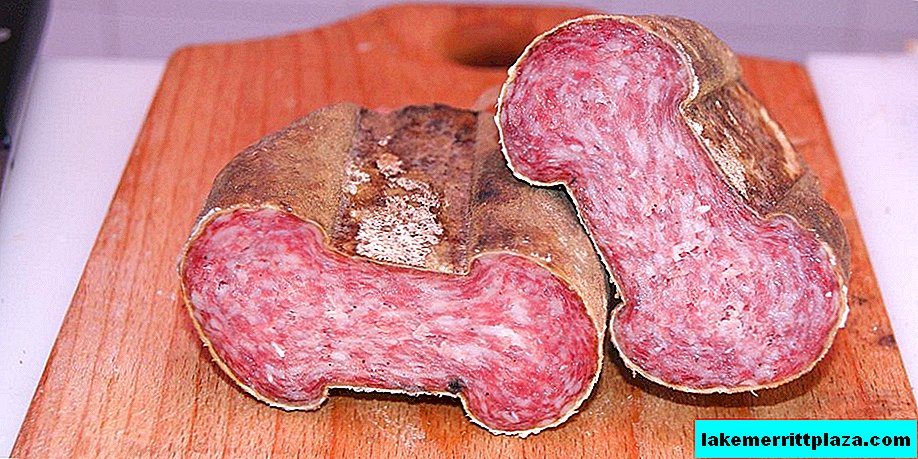
Interestingly, not all varieties of mortadella are prepared in this way. Some of them are not even cooked sausages and are more reminiscent of salami (Mortadella della val d'Ossola, Mortadella di Amatrice, Mortadella di Camaiore, Mortadella di Campotosto). Another unusual meat product is Mortadella di fegato. This product is from a raw liver, which does not undergo heat treatment, but is dried for 4-5 months.
In Russia and in the territory of the former Soviet Union, the doctoral sausage is an analogue of mortadella.
However, this product is usually made from a mixture of beef and pork and does not contain pieces of lard. As spices for it, use coriander and nutmeg. In addition, the Russian product is supplemented with eggs and milk. Italians believe that such components interrupt the taste of meat.
Homemade recipe
Cooking sausages at home is a rather interesting process. In addition, it allows you to save some of the money on the purchase of the finished product. Of course, when it comes to high-quality sausage. The most enticing option for home exclusive is mortadella. The recipe takes a minimum of time, and the result is amazing in taste.
Make sure at your fingertips:
- Minced pork 300-400 g;
- A handful of peeled pistachios (optional);
- Salt and pepper to taste;
- Pork intestines (sheath);
- Twine;
- Ice cubes.
Put the prepared stuffing in a large container and mix with salt, pepper and a part of pistachios. Beat everything with a submersible blender to a homogeneous, pasty consistency. Then add the remaining pistachios and mix well. We fill the mixture with pre-washed intestines with a meat grinder or spoon.
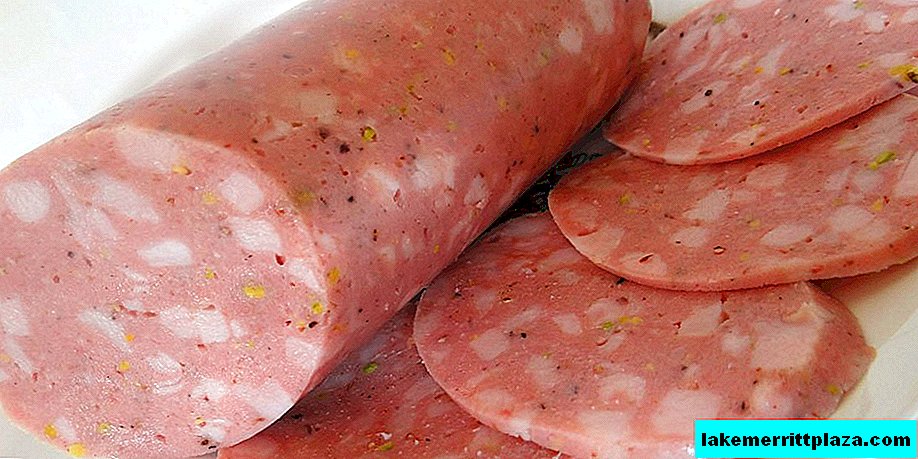
We tie the ends of the intestines with twine and put in the oven, heated to 80 degrees. The preparation of mortadella takes at least 6 hours. Over time, we take out our sausage and lower it into a basin with cold water and ice cubes for 3-4 minutes. Thus we stop the cooking process. We take the product out of water, dry it on a clean cloth and send it to the refrigerator.
Recommendations
To bring the prepared mortadella to an ideal according to such a simple recipe, you can follow even simpler recommendations:
- In order to get an excellent sausage at the exit, you need to choose high-quality meat. The percentage of fat in it should be about 30%.
- If you don’t have any twine on hand, then sew the ends of the intestines with a needle and a thick thread.
- Those who prefer wetter meat products should put a pot of water in the oven for the duration of the sausage preparation.
- The ingredients of the recipe can be slightly changed to your liking. For example, instead of black pepper, put white or red, add garlic and other spices or exclude pistachios.
Do not forget that it is advisable to store the finished product no more than a week. Unless, of course, you eat it earlier.
How and with what
Mortadella is very versatile in gastronomic preferences. It can be eaten both separately from other products, and, combining with something, as part of numerous recipes.
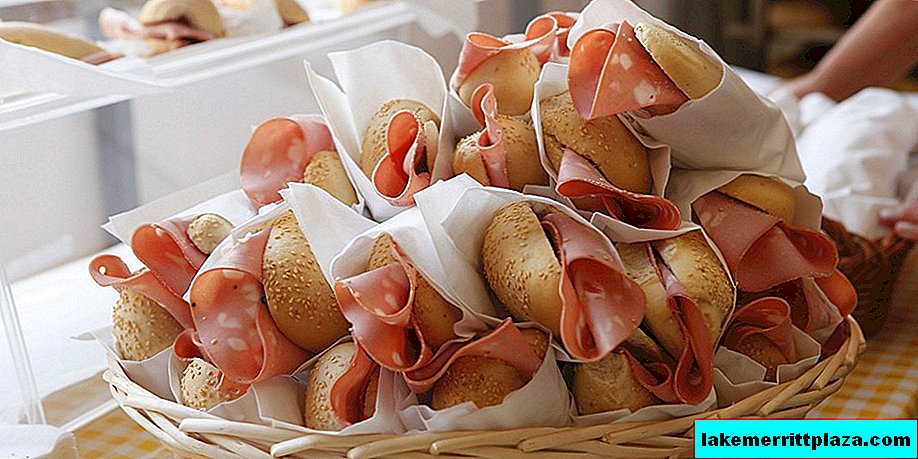
Traditionally, sausage is cut into thin slices or small cubes and eaten accompanied by bread (rosette or creche) or bread sticks. Mortadella is supplemented with parmesan and a few drops of balsamic vinegar.
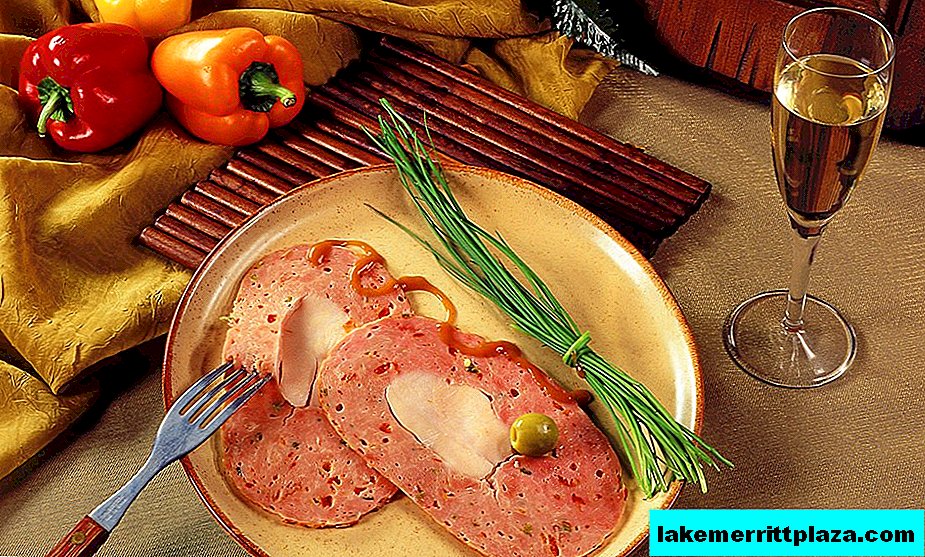
It is used in forcemeat for the preparation of tortellini, stews, sauces, pies and salads. It acts as a component of soups, omelettes and meat rolls. It goes well with sparkling wines and champagne.
Calorie content and benefits
Mortadella is a much less high-calorie product than it seems at first glance. 100 g of the product contains only 288 kcalwhich consist of:
- Proteins 15.7 g;
- Fats 25.0 g;
- Carbohydrates 0 g.
But despite the relatively low calorie content, the product has a fairly high content of fat and cholesterol (60-70 mg). In addition, the distribution of the proportion of fatty acids outweighs the saturated ones. These aspects make mortadella not quite suitable for the nutrition of people suffering from high cholesterol or overweight.
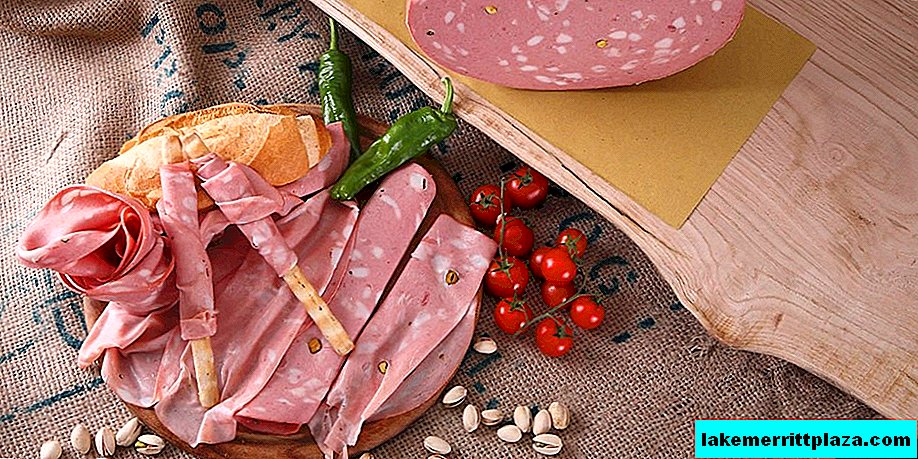
Sausage is also rich in sodium contained in table salt. Its excessive presence in the diet in the long term can lead to the development of hypertension.
The proteins that make up mortadella have a high biological value. Their amino acid set mainly includes glutamic and aspartic acids, leucine and lysine. The last two are included in the list of essential amino acids that enter the human body only with food.
Mortadella has a high content of minerals, especially iron, phosphorus and zinc. Therefore, it can be considered ideal food for people who perform physical activity and need to consume the “right energy”. Vitamins B1, B2 and niacin are another definite plus of the product. They are directly involved in the regulation of metabolism.
From the foregoing, we can conclude that the use of mortadella can be more systematic than permanent. The average portion of sausage for a healthy person leading an active lifestyle should not exceed 60-80 g. For athletes with severe physical exertion, it is allowed to eat more mortadella in one meal.
Price for 1 kg
The cost of mortadella in Italy directly depends on the variety and the manufacturer. The most valuable sausage from Bologna with the IGP quality mark can be bought within 12-25 Euros per 1 kg.
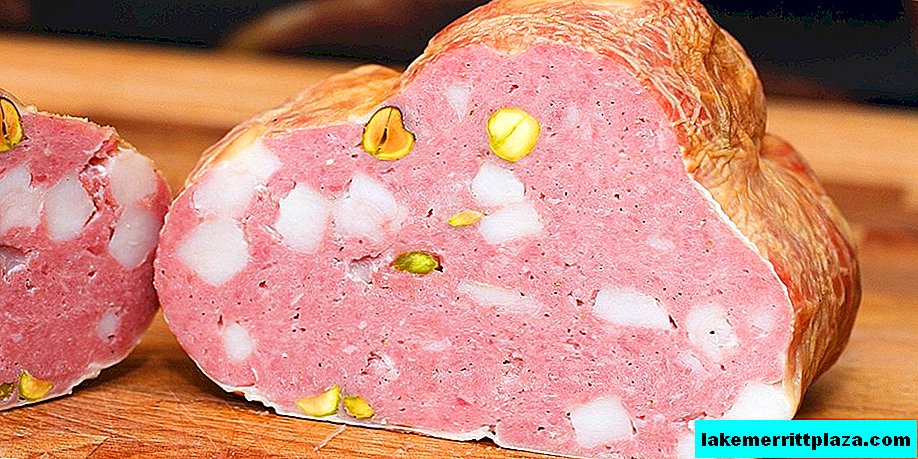
In Moscow, the cost of Italian mortadella varies from 1000 to 2200 rubles per 1 kg.
Now, after reading this article, do you understand the significant differences between mortadella and domestic sausages? If so, then you definitely need to gather in the republic for a tasting of the fragrant Bologna. Live briskly, hurry to love, take care of your loved ones and remember: "They don’t go to Italy with their Doctoral!"



